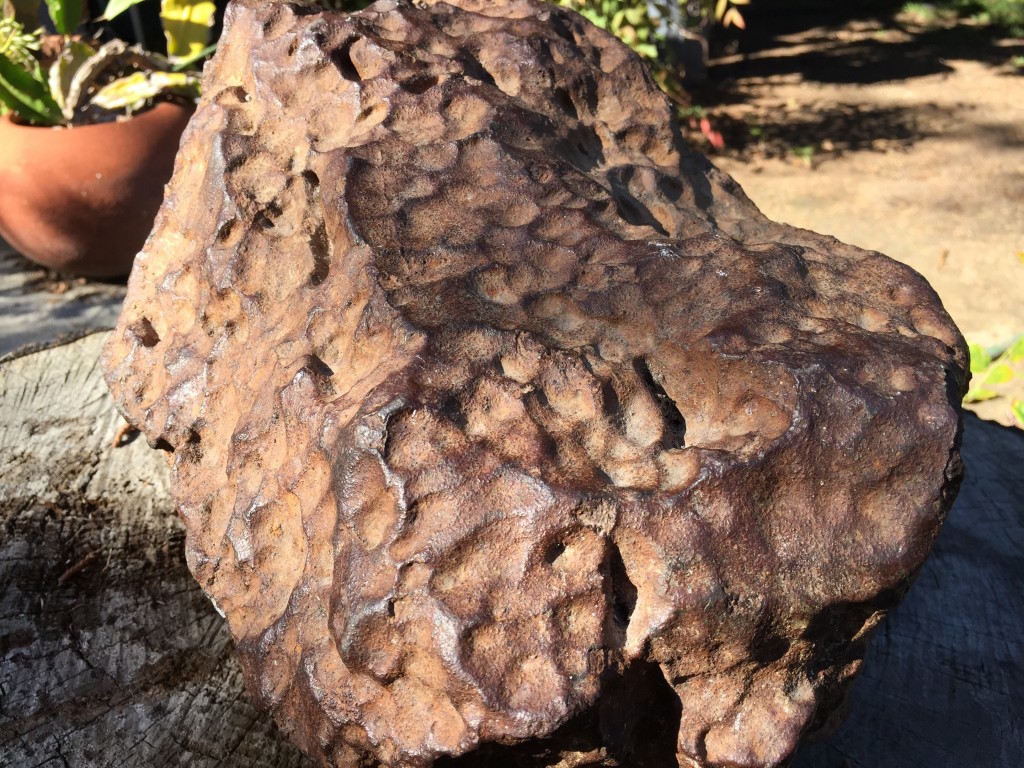Matamoros, H6
This 30.4 kilogram stone came from just South of the border, near the town of Matamoros, Mexico. The owner posted some photos to a facebook group for meteorite enthusiasts, asking if they could confirm that it was a meteorite. He unfortunately received mixed responses, despite posting the below images. Luckily, I and a few other group members pursued it, and the owner was kind enough to remove a sample, which he sent to UCLA for analysis.
While researching the area, I discovered that the GPS coordinates on record for a nearby witnessed fall, El Paso de Aguila (H5), were incorrect in the Bulletin and submitted the correction. As it turned out, this new 30+ kg stone was found just one or two miles from the 17 kg stone recovered in 1977. I strongly suspect that this new find is a mass of the witnessed fall, which sat outside in the Gulf humidity for ~40 years.
This stone was classified as an H6 S3 W2. The mass is complete, minus the specimen removed for analysis. I was going to include a copy of its Meteoritical Bulletin write-up once it was approved, but since it is likely to be a mass of an already-published meteorite, I’m not quite sure what to do with it.
Unfortunately, Matamoros and its surroundings are notorious for ongoing drug cartel conflicts and kidnappings. Scouting out the area will have to wait.




While putting together the write-up for this stone, I realized that it might be a piece of a witnessed fall from the 1970s. El Paso de Aguila was a 17 kilogram H5 reported to have fallen in November of 1977, approximately seven miles due South of where Matamoros was found.
El Paso de Aguila is classified as an H5, not an H6, but the analytical data are very similar. Unfortunately, a side-by-side sample comparison would be needed to support or rule out a pairing, and I doubt that this will be possible. The weathering of Matamoros is certainly in line with a stone that has been left outside for ~35 years in the Gulf. Compare it to specimens of, say, Gao. I don’t know that we’ll ever be able to resolve the question, but it’s interesting.
Here are some more recent images of this 30 kg stone, human for scale.




 This stone might be on display at UCLA soon — stay tuned.
This stone might be on display at UCLA soon — stay tuned.